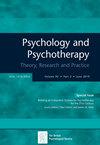The benefits of sharing house-tree-fire-water-person drawings with parents when their anxious child is in sandplay therapy
Abstract
Introduction
The purpose of this study is to critically reflect on the value of the House-Tree-Fire-Water-Person (HTFWP) drawing as a tool to engage the parents of children aged 10–12 in sandplay therapy for Generalized Anxiety Disorder (GAD). To do so, we draw on empirical work that addressed gaps in the existing parent-psychologist alliance literature by exploring the usefulness of sharing the HTFWP drawing series with parents at feedback sessions.
Methods
We employed an instrumental, multiple case study design. The sample consisted of 7 cases, involving parents (n = 9) and child-clients referred for GAD (n = 7). Parent-generated data included the verbatim transcripts of initial semi-structured interviews, three HTFWP drawing elicitation conversations (i.e. HTFWP-facilitated feedback sessions) and a post-intervention semi-structured interview. Child-generated data included three HTFWP drawings and child-driven explanations of these drawings. Psychologist-generated data included journal-recorded reflections and process notes. Using reflexive thematic analysis, we identified patterns in these data.
Results
Findings suggest that an alliance created between parent and psychologist through sharing the HTFWP drawing series with parents was a win for everyone (parents, child and psychologist). This ‘win-win’ situation included enhanced care for the child, bolstered parental support and heightened efficacy for the psychologist.
Conclusion
The HTFWP drawing has high potential to support the therapeutic process, with emphasis on its facilitation of a parent –psychologist alliance and spillover benefits for parents, the treating psychologist and the child-client.





 求助内容:
求助内容: 应助结果提醒方式:
应助结果提醒方式:


